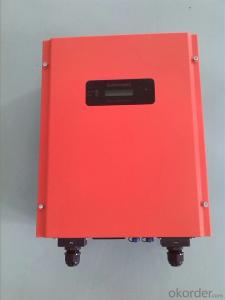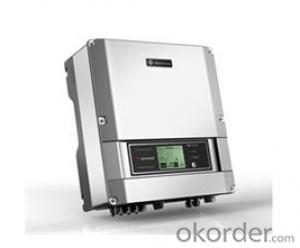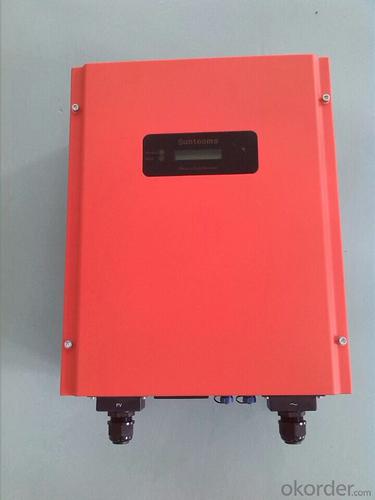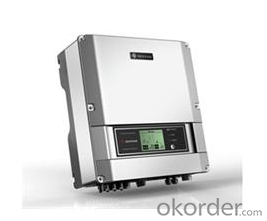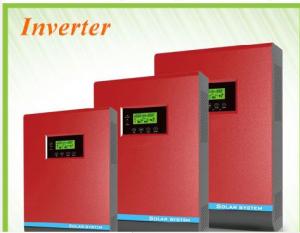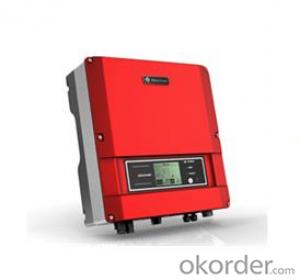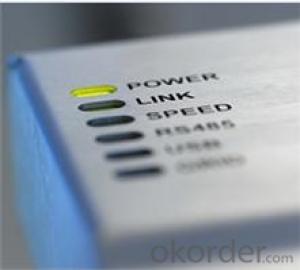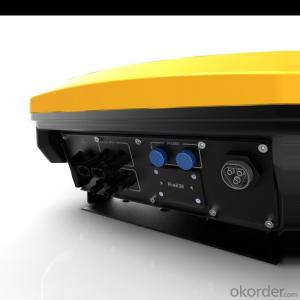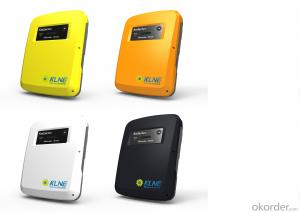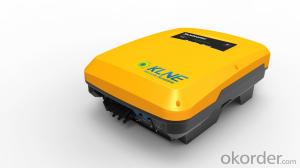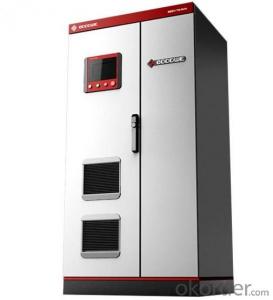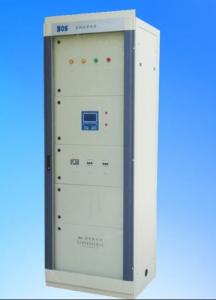Solar Inverter 240v - Solartec Central 500 On-Grid Type
- Loading Port:
- Shanghai
- Payment Terms:
- TT OR LC
- Min Order Qty:
- 10 unit
- Supply Capability:
- 1000 unit/month
OKorder Service Pledge
OKorder Financial Service
You Might Also Like
3. High effiency and low noise
.2. Can used out of doors
The photovoltaic grid-connected inverters in the Solartec Central 250/500 series are applicable to rooftop projects and power plant projects. The nominal output powers of Solartec Central 250 and Solartec Central 500 are 250 kW and 500 kW respectively.
1. Powered by DC current
This series has the Siemens core inverter module, an advanced MPPT algorithm and advanced circuit topology. They have a high conversion efficiency. They have a fast and highly accurate control chip, and have the functions of reactive power compensation, harmonic controlling, overcurrent protection, overvoltage protection, temperature protection, active and passive islanding detection and low-voltage ride through. Additionally, they support optical fiber remote monitoring and have reached European certification standards, including Germany’s.
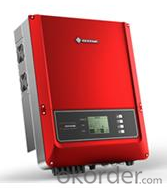
Product Advantages:
1. Powered by DC current
2. Can used out of doors
3. High effiency and low noise
FAQ:
What is your payment terms?
We accept T/T payment, normally we need 20% T/T in advance, 80% payed before shipment.
What is your packing system?
We put the sistem in the wooden box.
Can you do OEM service?
Yes we can, but we need to do it with a certain order quantity.
- Q: Can a solar inverter be used in conjunction with a backup generator?
- Yes, a solar inverter can be used in conjunction with a backup generator. In a hybrid system, the solar inverter intelligently manages the power supply, utilizing solar energy when available and seamlessly switching to the backup generator during times of low solar production or high energy demand. This setup ensures continuous power supply even during cloudy days or power outages.
- Q: Can a solar inverter be upgraded or expanded?
- Yes, a solar inverter can be upgraded or expanded. Upgrades can involve increasing the capacity or efficiency of the existing inverter, while expansion typically refers to adding more inverters to the system to accommodate additional solar panels or increase the overall energy output. However, it is important to consult with a professional to ensure compatibility and proper integration with the existing solar power system.
- Q: What is the role of an isolation transformer in a solar inverter?
- The role of an isolation transformer in a solar inverter is to provide electrical isolation between the solar panels and the grid. It helps protect the solar panels and the inverter from electrical disturbances, such as voltage spikes or surges, that may occur in the grid. Additionally, the isolation transformer helps mitigate ground fault currents and provides a safety barrier between the grid and the solar system.
- Q: Can a solar inverter be used with a ground-mounted solar array?
- Yes, a solar inverter can be used with a ground-mounted solar array. The inverter is responsible for converting the direct current (DC) generated by the solar panels into alternating current (AC) that can be used to power household appliances or be fed back into the grid. Whether the solar array is ground-mounted or roof-mounted, the inverter's function remains the same.
- Q: Can a solar inverter be used with a solar air conditioning system?
- Yes, a solar inverter can be used with a solar air conditioning system. The solar inverter helps convert the DC power generated by the solar panels into AC power that is suitable for powering the air conditioning system. This allows for the utilization of solar energy to cool or heat a building, making it an eco-friendly and energy-efficient solution.
- Q: How does a solar inverter handle voltage sag and swell?
- A solar inverter handles voltage sag and swell by utilizing its power conditioning capabilities. When it detects a voltage sag (a temporary decrease in voltage), the inverter adjusts its internal control algorithms to provide a stable and consistent output voltage to the connected loads. Similarly, in the case of voltage swell (a temporary increase in voltage), the inverter modifies its operation to prevent overvoltage conditions and ensure a safe and regulated output. Through continuous monitoring and intelligent control, a solar inverter effectively manages voltage fluctuations to maintain stable power delivery.
- Q: How does a solar inverter handle electromagnetic interference?
- A solar inverter handles electromagnetic interference (EMI) by incorporating various measures to reduce and mitigate its impact. These measures include using shielding materials, implementing proper grounding techniques, and utilizing filters to suppress EMI. Additionally, advanced inverters may employ digital signal processing techniques to minimize the effects of EMI on the solar power system.
- Q: How does a solar inverter communicate with monitoring systems?
- A solar inverter communicates with monitoring systems through various means such as wireless technologies like Wi-Fi, Bluetooth, or Zigbee, or through wired connections like Ethernet or RS485. These communication channels allow the inverter to transmit important data and performance metrics to the monitoring systems in real-time.
- Q: How does a solar inverter handle voltage regulation during high demand?
- A solar inverter handles voltage regulation during high demand by carefully monitoring the voltage levels from the solar panels and adjusting its output accordingly. When there is high demand, the inverter can increase the voltage to meet the required levels. Additionally, some advanced inverters also have features like reactive power control and voltage regulation algorithms to ensure stable voltage supply during high demand situations.
- Q: Are there any maintenance requirements for a solar inverter?
- Yes, there are maintenance requirements for a solar inverter. Regular inspections, cleaning, and monitoring of the inverter's performance are necessary to ensure it operates efficiently and effectively. Additionally, components like capacitors and fans may require replacement over time. Following manufacturer guidelines and seeking professional assistance when needed can help extend the lifespan and performance of the solar inverter.
Send your message to us
Solar Inverter 240v - Solartec Central 500 On-Grid Type
- Loading Port:
- Shanghai
- Payment Terms:
- TT OR LC
- Min Order Qty:
- 10 unit
- Supply Capability:
- 1000 unit/month
OKorder Service Pledge
OKorder Financial Service
Similar products
Hot products
Hot Searches
Related keywords
